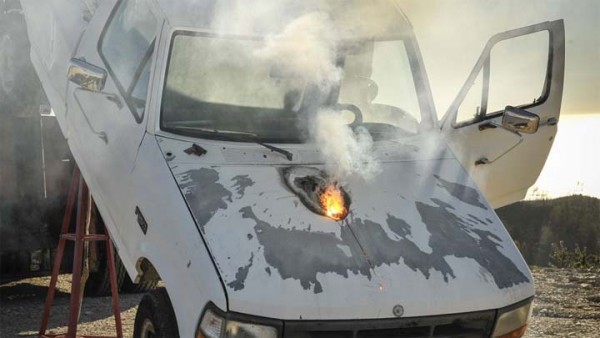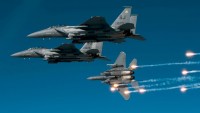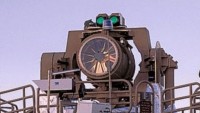US Army Speeds-up Development of Battlefield High Energy Lasers
| Arthur Dominic Villasanta | | Sep 19, 2016 03:40 AM EDT |
(Photo : Lockheed Martin) Lockheed Martin ATHENA laser weapon system destroys a truck target by disabling the engine, demonstrating its military effectiveness against enemy ground vehicles.
The U.S. Army will spend some $150 million over the next four years to speed-up the development and deployment of its mobile high energy laser (HEL) systems ranging from 50 kilowatts to 100 kW.
The army sees battlefield HELs as the perfect -- and cheapest -- weapon to defeat small caliber mortar rounds, unmanned aerial vehicles (UAVs), land mines, sensors and optics. It can cost just $1.00 or less to take out an enemy UAV using a HEL whereas using a weapon such as a FIM-92 Stinger surface-to-air missile to do this job costs close to $40,000 per round.
Like Us on Facebook
There's also no need to deliver and stockpile rounds for a laser, an advantage that immensely boosts its offensive and defensive capabilities.
The army will begin testing a 50 kW battlefield laser in 2017. It will then proceed to testing a 100 kW HEL until 2021. It's prepared to spend up to $30 million per year from 2017 to 2021 on developing and perfecting its HEL weapons technology.
Particular attention will be paid to advancing the development of a HEL weapons system using a high-power solid state laser (SSL) specifically designed to meet the army's requirements for a HEL weapon. The "entry level weapon" will be a 10 kW SSL technology to destroy mortar rounds and UAV, among others, and to disable enemy optical devices and sensors such as those mounted on Russian tanks.
The apogee of this program, however, will be a 100 kW SSL that can engage and defeat battlefield rockets, artillery and mortar rounds (RAMs), UAVs, cruise missiles, sensors and optics. HELs are expected to complement conventional offensive and defensive weapons.
The army's HEL program consists of a "Laser System Ruggedization" and "High Energy Laser Mobile Demonstrations (HEL MD)."
"Ruggedization" includes modifications of the laser system to withstand vibration, temperature and other injurious events expected on the battlefield.
The US Army this year continues "ruggedizing" subsystems for its 50 kW SSL and will complete this process in 2017.
©2015 Chinatopix All rights reserved. Do not reproduce without permission
EDITOR'S PICKS
-

Did the Trump administration just announce plans for a trade war with ‘hostile’ China and Russia?
-

US Senate passes Taiwan travel bill slammed by China
-

As Yan Sihong’s family grieves, here are other Chinese students who went missing abroad. Some have never been found
-

Beijing blasts Western critics who ‘smear China’ with the term sharp power
-

China Envoy Seeks to Defuse Tensions With U.S. as a Trade War Brews
-

Singapore's Deputy PM Provides Bitcoin Vote of Confidence Amid China's Blanket Bans
-

China warns investors over risks in overseas virtual currency trading
-

Chinese government most trustworthy: survey
-

Kashima Antlers On Course For Back-To-Back Titles
MOST POPULAR
LATEST NEWS
Zhou Yongkang: China's Former Security Chief Sentenced to Life in Prison

China's former Chief of the Ministry of Public Security, Zhou Yongkang, has been given a life sentence after he was found guilty of abusing his office, bribery and deliberately ... Full Article
TRENDING STORY

China Pork Prices Expected to Stabilize As The Supplies Recover

Elephone P9000 Smartphone is now on Sale on Amazon India

There's a Big Chance Cliffhangers Won't Still Be Resolved When Grey's Anatomy Season 13 Returns

Supreme Court Ruled on Samsung vs Apple Dispute for Patent Infringement

Microsoft Surface Pro 5 Rumors and Release Date: What is the Latest?













